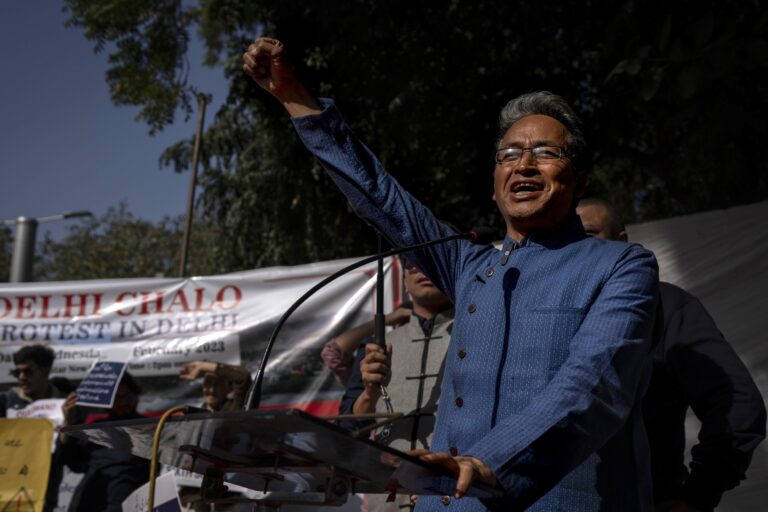- Nearly 12 years after tiger range countries committed to doubling the population of wild tigers, India and Nepal have managed to achieve the target by doubled their wild tigers while other countries remain stable and some show the potential for improvement.
- There is an urgent need for finance to ensure the protection of priority tiger protected areas (PAs) in Tiger Range Countries (TRCs), say the authors of the commentary.
- It is time that the tiger agenda becomes an “integral part” of climate commitments for the TRCs.
- The views in this commentary are that of the author.
This year, 2022, is the year of the tiger, as per the Chinese zodiac. The charm of the tiger casts its spell, with passionate tiger lovers inquisitive to know more about the big cat. Well, the status of wild tigers continues to be a cause of concern across several parts of their natural range. This year is also the year that the TX2 global commitment of doubling wild tigers is due to be met, a milestone that was decided more than a decade ago at the St. Petersburg Summit in Russia where tiger range governments came together. Since then, there have been good and not-so-good experiences on the wild tiger front.
With the phasing out of the Global Tiger Initiative by the World Bank, which was a global alliance to conserve the tiger, the wild tiger agenda has been mandated to the inter-governmental platform, the Global Tiger Forum (GTF), as an implementing arm of the restructured Global Tiger Initiative Council (GTIC). A concerted portfolio of performance by tiger range countries (TRCs) is reviewed with complimentary support as a part of the Global Tiger Recovery Program (GTRP).
Looking back, most of the tiger range countries deserve praise for their commitment. Some countries in South Asia (India and Nepal) have sites that have doubled their wild tigers, while the population in some other countries in the region (Bangladesh and Bhutan), remains stable. Vietnam, Lao PDR and Cambodia have suffered local extinctions, but Indonesia and Thailand hold a lot of promise. The concrete efforts of Malaysia are praiseworthy and worth emulating for strengthening wild tiger governance.
What is heartening is the fact that countries like Cambodia have taken an extra step for collaboration toward bringing back wild tigers through an ambitious in-situ revival programme. In the Amur-Heilong region of China and Russia, both countries are jointly working towards securing a large transboundary area for the conservation of Amur tigers.

So much has been written and said about the tiger and its governance. However, it is no understatement to say that both continue to remain poorly understood. The sovereign issue of wild tiger governance is accompanied by a host of governmental paraphernalia that officials need to comply with to make things happen. In the said context, such officials live in a world of their own wounds, least understood by crusaders for the cause or academics with tonnes of publications.
The GTF is no spokesperson for any individual or section of society. However, at this juncture, it becomes important to reiterate some basics when concerns blur practical wisdom. What Tiger Range Countries need now is generous support as acceptable to them in their sovereign managerial dispensation, for stepping up the field craft, with a focus on protection. This is vital to ensure any complementary support.
Countries with tiger abundance have amply demonstrated that protection, and protection alone holds the key to tiger population success. Such protection needs to be envisioned as complementary composite portfolios of an inclusive and exclusive set of actions. While source areas actively need strengthening with state-of-the-art security plans, peripheral areas and beyond require syncing with land uses of different stakeholders, including proactive measures toward human-wildlife conflict.
Both would result in protection. The former is direct, while the latter is slow and sustained. That brings us to the inevitable theme of community stewardship doing their bit with gains under Payment for Ecosystem Services (PES).
Read more: Return of the tiger at West Bengal’s Buxa tiger reserve
Finance gap for tiger protection needs urgent attention
What the GTF has seen is the fact that not all green funding going to a tiger range country is bringing gains to the wild tiger. The green kitty results in direct or ancillary green actions, and all may not directly benefit tigers. The GTF has also estimated that a gap of 138.47 million USD (based on 2021 estimate) needs to be urgently addressed for the protection of priority tiger protected areas (PAs) in Tiger Range Countries (TRCs). This is a very small percentage of the global biodiversity gap (0.019 percent) of the total global biodiversity financing gap (averaging about US$ 711 billion per year) as per a recent estimation.

Things are not all that gloomy. The tiger front is gaining ground and the TRCs have stepped up their effort despite several compelling demands. Conservation partners/NGOs have also come out with a meaningful, GTRP-aligned vision document. The sovereign issue of tiger sets a limit on inter-governmental and partner organisations in their outreach with individual TRCs, which needs to happen without obviating the sovereign country’s government system.
It is important to keep this in mind and work with the tiger range countries for helping them with their commitment. There are some inconvenient truths like captive tigers, unquenched and unabated demand for tiger body parts and derivatives, and misplaced enthusiasm for displaying tigers under the garb of tourism. In January 2020, Malaysia hosted the 4th Asia Ministerial Conference resulting in an action-oriented Kuala Lumpur joint statement. The participation was notable with almost all the TRC ministers making their statements and reiterating their commitment.
The issue of tiger farms and menageries requires priority consideration, and some countries have shown interest in molecular characterisation of their stock. Such efforts would be rewarding for a futuristic phasing-out strategy.
Wild tigers are much more than a photographers’ delight and they symbolise the well-being of an ecosystem, prevent distortion of zoonotic cycles, and their forests provide the much-needed adaptation to ward off the ill-effects of climate change. It is time that tiger agenda becomes an “integral part” of climate commitments and the TRCs to benefit from funds allocated for them.
The complementary support from green donors and partners should preferably enable a kitty or a trust fund for regions such as Southeast Asia, where the need is urgent. The year of the tiger – 2022 – gives an opportune moment to make such a resolve.
The authors, Rajesh Gopal and Mohnish Kapoor, are Secretary-General and Head of Programme and Partnerships at the Global Tiger Forum respectively.
Banner image: A healthy tiger population symbolises the well being of an ecosystem. Photo by Amoghavarsha/Wikimedia Commons.













